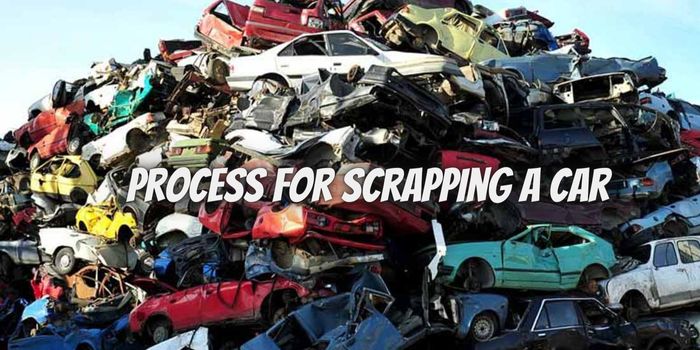As the automotive industry continues to evolve, car scrapping has become an indispensable component of its progress towards a greener and more accountable future. With this in mind, it is essential to understand the full process of responsibly disposing of an old or unusable vehicle from start to finish, ensuring you are fully informed and equipped to make an educated choice that will benefit both yourself and the environment. Here, we explore that journey, from the preliminary paperwork to the final accredited removal. Equip yourself with the knowledge to make a valuable contribution towards creating a more sustainable tomorrow.
What Is Car Scrapping?
Car scrapping is the process of recycling cars that are no longer usable. This involves dismantling a car to recover and reuse its valuable components or disposing of it in an environmentally responsible way. Car scrapping can be done either by professional dismantlers or enthusiast hobbyists. Professional scrapyards typically have a wide range of skills and equipment available to remove hazardous materials from cars and make them safe to be recycled. For hobbyists, it involves disassembly of the vehicle by hand using essential tools in order to salvage parts for reuse or disposal in accordance with regulations. Car scrapping offers environmental benefits such as reducing the amount of waste sent to landfills, conserving natural resources, and reducing air pollution from burning fossil fuels.
The Car Scrapping Process
These steps are carried out by licensed scrapyards or recycling centres that follow stringent environmental guidelines.
-
Vehicle Collection:
The vehicle scrapping process requires the removal of the automobile by either the owner or an accredited scrapyard service. Upon arrival, a meticulous inspection is conducted to identify any potential safety risks and draining of hazardous fluids, including oil, coolant, and fuel. To ensure eco-friendly disposal, all discharged liquids are handled with responsible care. By adhering to these steps, you will be partaking in a safe and sustainable collection process.
-
Dismantling:
Systematic disassembly reveals the hidden gems within a vehicle. To extract these treasures, careful dismantling of the machine is essential. After draining fluids and completing an initial inspection, trained technicians systematically remove parts such as the engine and transmission to recover their value. Subsequently, these components can be refurbished and sold for reuse in another vehicle. With this approach, we aim to maximise resource efficiency while bolstering sustainability.
-
Material Separation:
Following the collection process, recyclable materials must be precisely divided into distinct categories, including metals, plastics, and rubber. Subsequently, these components are transported to specialized centres for further processing; for example, recycled metals may be subjected to melting and remoulding to create new automobile parts or other items. By utilizing this innovative approach, we can reduce waste, preserve resources, and drive sustainability across a wide range of industries.
-
Hazardous Waste Management:
The wise management and disposal of hazardous materials contained in cars, such as lead-acid batteries and airbags, is an imperative priority. To safeguard our environment and protect our planet’s future, strict adherence to environmental regulations must be followed while disposing of these components. Taking proactive measures today can foster a safer, healthier tomorrow.
-
Recycling and Reuse:
With conscious stewardship of resources being ever more vital, wise preservation and reuse of materials is a cornerstone of sustainability. Through comprehensive recycling processes, metals are melted down, plastics shredded, and rubber reforged for future use. Furthermore, the salvaging and refurbishment of parts allows these components to be reintroduced into consumer or auto markets, resulting in savings both quantifiable and invaluable. Commendable in its impact and practical application, recycling and reuse not only pave the way toward a greener society but also continue to bring tangible rewards even today.
The Environmental Impact
By embracing car scrapping, we can make a profoundly positive impact on our planet. This progressive practice ensures the efficient reuse of materials, considerably reducing the need for new raw resources and attendant energy consumption. Simultaneously, the extraction of existing materials from end-of-life vehicles is cutting greenhouse gas emissions, providing robust stewardship to safeguard our environment for future generations.
By opting to scrap your ageing car, you are not only pursuing personal financial gain but also becoming a champion of global environmental conservation. When you make the wise decision to disassemble and recycle your vehicle, you join a powerful force advocating for cleaner emissions standards and reduced atmospheric pollution. With each conscientious dismantlement, we march triumphantly forward on our united path toward a sustainable future. In conclusion, if you’re in Ottawa and looking to dispose of your old vehicle responsibly, consider reaching out to the Scrap My Car Ottawa team. Their expertise and commitment to eco-friendly car scrapping will ensure your old car is put to rest in an environmentally conscious manner.




